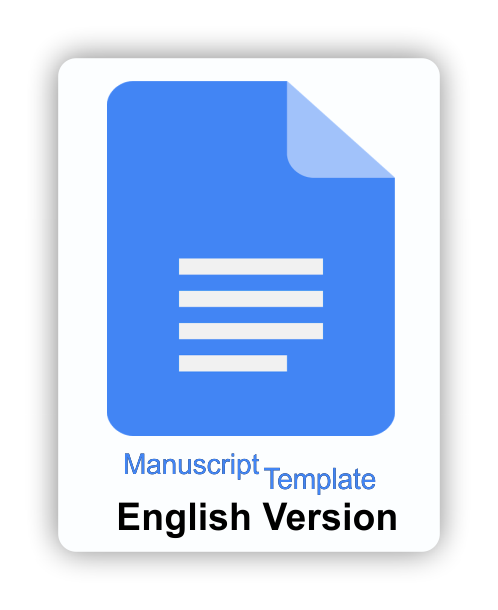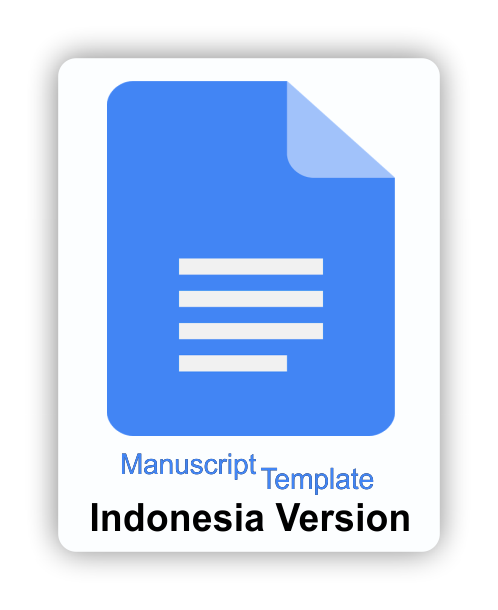Systematic review of multiliteracies skills, multimodal tools to facilitate learning in early childhood classroom
Kayode Ezechael Obafemi, Kwara State University, Nigeria
Abstract
Keywords
Full Text:
PDFReferences
Benson, S. (2008). A restart of what language arts is: Bringing multimodal assignments into secondary language arts. Journal of Advanced Academics, 19, 634-674. https://doi.org/10.4219/jaa-2008-828
Boyle, E., Hainey, T., Connolly, T. M., Gray, G., Earp, J., Ott, M., Lim, T., Ninaus, M., Ribeiro, C., & Pereira, J. (2016). An update to the systematic literature review of empirical evidence of the impacts and outcome of computer games and serious games. Computers & Education, 94, 178-192. https://doi.org/10.1016/j.compedu.2015.11.003
Butler, Y. G. (2019). Gaming and young learners. In S. Garton & F. Copland (Eds.) Hand-book of teaching English to young learners (pp. 305-319). https://doi.org/10.4324/9781315623672-20
Chandler, P.D., (2017). To what extent are teachers well prepared to teach multimodal authoring? Cogent Education, 4(1), 1-19. https://doi.org?10.1080/2331186x.2016.1266820.
Coiro, J., Knobel, M., Lankshear, C., & Leu, D. J. (2008). Handbook of research on new literacies. Lawrence Erlbaum Associates. https://researchonline.jcu.edu.au/27781/1/27781_Coiro_etal_2008.pdf
Coman, C., Țîru, L., G., Meseșan-Schmitz. L., Stanciu, C., Bularca, M., C. (2020). Online Teaching and Learning in Higher Education during the Coronavirus Pandemic: Students’ Perspective. Sustainability. 12(24):10367. https://doi.org/10.3390/su122410367
Duncum, P. (2004). Visual culture isn't just visual: Multiliteracy, multimodality and meaning. Studies in art education, 45, 252-264. https://doi.org/10.1080/00393541.2004.11651771
Finfgeld-Connett, D. (2014). Use of content analysis to conduct knowledge-building and theory-generating qualitative systematic reviews. Qualitative research, 14(3), 341-352. https://doi.org/10.1177/1468794113481790
Gee, J. P. (2004). New times and new literacies: Themes for a changing world. In A. F. Ball & S. W. Freeman (Eds.), Bakhtinian perspectives on language, literacy, and learning (pp. 279-306). Cambridge, UK: Cambridge University Press. https://doi.org/10.1017/CBO9780511755002.014
Hainey, T., Connolly, T. M., Boyle, E. A., Wilson, A., & Razak, A. (2016). A systematic literature review of games-based learning empirical evidence in primary education. Computers & Education, 102, 202-223. https://doi.org/10.1016/j.compedu.2016.09.001
Hall, S. (1996). The meaning of new times. In A. Morley & K. H. Chen (Eds.), Critical dialogues in cultural studies (pp. 223-237). NY: Routledge. https://www.academia.edu/download/36977630/Critical_Dialogues_in_Cultural_Studies_Struart_Hall.pdf#page=234
Halliday, M. A. K. (1978). Language as social semiotic: the social interpretation of language and meaning. London: Edward Arnold. https://doi.org/10.1017/S004740450000782X
Jewitt, C. (2008). Multimodality and Literacy in School Classrooms. Review of Research in Education, 32, 241-267. https://doi.org/10.3102/0091732X07310586
Kalantzis, M., & Cope, B. (2008). Language education and multiliteracies. Encyclopedia of language and education, 1, 195-211. https://doi.org/10.1007/978-0-387-30424-3_15
Kress, G. (2003). Literacy in the new media age. London: Routledge. https://doi.org/10.4324/9781003099857
Kress, G., Jewitt, C., Ogborn, J., & Tsatsarelis, C. (2001). Multimodal teaching and learning: the rhetorics of the science classroom: London: Continuum. https://www.bloomsbury.com/uk/multimodal-teaching-and-learning-9781441109965/
Kress, G., & Van Leeuwen, T. (1996). Reading images: the grammar of visual design. London: Routledge. https://doi.org/10.4324/9781003099857
Lankshear, C., & Knobel, M. (2007). Sampling “the New” in new literacies. In M. Knobel & C. Lankshear (Eds.), A New Literacies Sampler (pp.1-24). NY: Peter Lang. https://www.researchgate.net/publication/283968439_Sampling_the_new_in_new_literacies
Lankshear, C. & Knobel, M. 2011. The New Literacies. 3rd Edition. Mcgraw Hill. http://eprints.jcu.edu.au/18503/7/18503_Lankshear_&_Knobel_2011_Back_pages.pdf
Lave, J., & Wenger, E. (1991). Situated learning: Legitimate peripheral participation. Cambridge: Cambridge University Press. https://doi.org/10.1017/CBO9780511815355
Liang, W. L. J., & Lim, F. V., (2020). A pedagogical framework for digital multimodal composing in the English Language classroom. Innovation in Language Learning and Teaching, 1-5. https://doi.org/10.1080/17501229.2020.1800709
Luke, A. (1998). Getting over method: Literacy teaching as work in “new times”. Language Arts, 75, 305-313. https://www.jstor.org/stable/41962065
Martinec, R. (2000). Types of process in action. Semiotica, 130, 243-268. https://www.degruyter.com/document/doi/10.1515/semi.2000.130.3-4.243/html
Martinec, R. (2005). Topics in Multimodality. In R. Hasan, C. Matthiessen & J. Webster (Eds.), Continuing Discourse on Language (Vol. 1). London: Equinox. https://scholars.cityu.edu.hk/en/publications/publication(3d83e73b-6fa5-4a94-8afb-aeff6d9e4eba).html
Mills, K. A. (2015). Doing digital composition on the social web: Knowledge processes in literacy learning. In B. Cope & M. Kalantzis (Eds.), A Pedagogy of multiliteracies: Learning by design (pp. 172-185). New York: Palgrave Macmillan. https://link.springer.com/chapter/10.1057/9781137539724_10
Mirra, N., Morrell, E., & Fillipiak, D. (2018). From digital consumption to digital invention: Toward a new critical theory and practice of multiliteracies, Theory into Practice, 57(1), 12-19. https://doi.org/10.1080/00405841.2017.1390336
Mohd, I.I., Nur, E.M.S., & Tan, K.H., (2020). Game-based learning platform and its effects on present tense mastery: Evidence from an ESL classroom. International Journal of Learning, Teaching and Educational Research. 19(5),13-26. https://doi.org/10.26803/ijlter.19.5.2
New London Group. (1996). A pedagogy of multiliteracies: Designing social futures. Harvard Educational Review, 66, 60-92. https://doi.org/10.17763/haer.66.1.17370n67v22j160u
O'Halloran, K. L. (2000). Classroom discourse in mathematics: A multisemiotic analysis. Linguistics and Education, 10, 359-388. https://doi.org/10.1016/S0898-5898(99)00013-3
Olthouse, J. M. (2013). Multiliteracies theory and gifted education: Creating “Smart Spaces” in the language arts classroom. Gifted Child Today, 36(4), 247-253. https://doi.org/10.1177/1076217513497575
Pelling, N., (2011). The (short) prehistory of “gamification” …. Funding Startups & otherimpossibilities. Retrieved from https://nanodome.wordpress.com/2011/08/09the-short-prehistory-of-gamification.
Perry, K. H. (2012). What is literacy? – A critical overview of sociocultural perspectives. Journal of Language & Literacy Education, 8(1), 50-71. https://files.eric.ed.gov/fulltext/EJ1008156.pdf
Pishol, S., & Kaur, S. (2015). Teacher and students perceptions of reading a graphic novel using the multiliteracies approach in an ESL classroom. Malaysian Journal of Learning and Instruction, 12, 21-47. https://doi.org/10.32890/mjli2015.12.2
Pramling, N., & Wallerstedt, C. (2009). Making musical sense: The multimodal nature of clarifying musical listening. Music Education Research, 11, 135-151. https://doi.org/10.1080/14613800902924433
Santori, D., & Smooth, C.A., (2018). Teaching and learning with iPads to support dialogic construction of multiliteracies, Middle School Journal, 49(1), 24-31. https://doi.org/10.1080/00940771.2018.1398944
Scherer, R., Siddiq, F., & Tondeur, J. (2019). The technology acceptance model (TAM): A meta-analytic structural equation modeling approach to explaining teachers' adoption of digital technology in education. Computers & Education, 128, 13-35. https://doi.org/10.1016/j.compedu.2018.09.009
Tan, P.Q., & Tan, K.H. (2020). In-game instructions: The extent of their usefulness in enhancing the vocabulary acquisition of ESL learners. International Journal of Emerging Technologies in Learning (iJET), 15(4), 73-89. https://doi.org/10.3991/ijet.v15i04.11647
Tang, K. S. (2015). Reconceptualizing science education practices from new literacies research. Science Education International, 26(3), 307-324. https://eric.ed.gov/?id=EJ1074880
Van Leeuwen, T. (1998). Music and Ideology: Notes toward a Sociosemiotics of mass media music. Popular Music and Society, 22(4), 25-54. https://doi.org/10.1080/03007769808591717
Westby, C. (2010). Multiliteracies: The changing world of communication. Topics in Language Disorders, 30(1), 64-71. DOI: 10.1097/TLD.0b013e3181d0a0ab
Williams, A. (2017). History of digital games: Development in art, design and interaction. Boca Raton, FL: Focal Press. https://doi.org/10.1201/9781315715377
Zhang, Z., Nagle, J., McKishnie, B., Lin, Z., & Li, W. (2019). Scientific strengths and reported effectiveness: a systematic review of multiliteracies studies. Pedagogies: An International Journal, 14(1), 33-61. https://doi.org/10.1080/1554480X.2018.1537188
DOI: https://doi.org/10.21831/jitp.v10i4.66343
Refbacks
- There are currently no refbacks.
Copyright (c) 2023 Francis Moodu Yakubu, Kayode Ezechael Obafemi

This work is licensed under a Creative Commons Attribution-ShareAlike 4.0 International License.
Our journal indexed by:
View Journal Statistics


















.png)